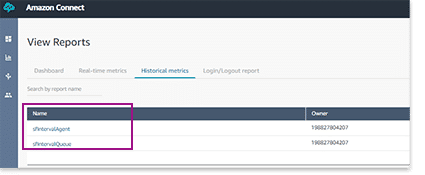When implementing and integrating Salesforce with a cloud contact center solution, it is imperative to get call center statistics available automatically in Salesforce.
Classic telephony solutions
Classic telephony solutions like Cisco or Avaya, don’t have the standard functionalities available to automatically load call statistics in your CRM solution. Instead, reporting on data like call length or agent activities, and combining these call center metrics with Customer Relationship Management data, typically requires a Datawarehouse integration. Only in DWH, all data from different systems is available to make that integrated reporting.
Statistics – Integrated
However, from a Salesforce perspective, it is much needed to have call center related statistics readily available. Cloud Contact Center solutions, like Amazon Connect, have standard integrations readily available. At regular intervals, call statistics get uploaded and so become readily available for reporting in Salesforce.
Like on any other data that is in Salesforce, you want to run reports against your call center data. An out-of-the-box report for Amazon Connect looks as follows:

How to setup automatic Amazon Connect reports in Salesforce?
The installation of the Amazon Connect Appexchange component contains the necessary setup to get the call statistics. What still needs to be done, is the setup of the reports and the schedule on Amazon Connect side.
Enable the export reports functionality on Amazon Connect

Setup the data export in Amazon Connect & schedule the upload to Salesforce
2 reports should get created: sfIntervalAgent and sfIntervalQueue. Once created, these reports are available in the ‘Saved Reports’ item under ‘Metrics and Quality’ (as displayed in the snapshot here below)

The setup of these reports defines when and how often the reports run.Defining when the reports run, is done as follows:

Defining the content of the reports is done by selecting the ‘Metrics’ tab in the snapshots above. There, select the metrics that should be included:

Run the reports in Salesforce
After about 30 minutes, the first reports will get uploaded into Salesforce. There, using the Report functionality, you may use the out-of-the-box Amazon Connect reports to see your call center statistics

Which results in a standard report like this:

What’s next?
Interested in Amazon Connect? Or want to know more how Amazon Connect may get integrated with your Salesforce implementation? Then fill in this contact form. We are happy to provide a demo!







